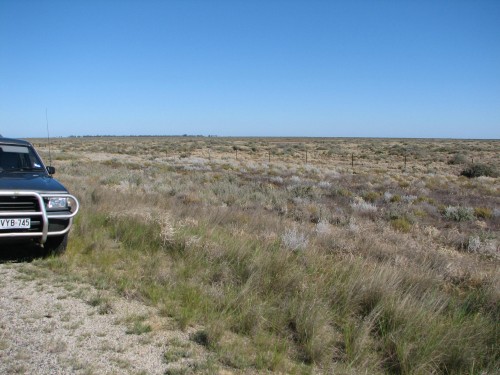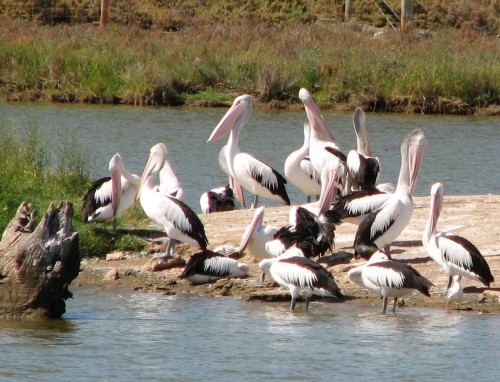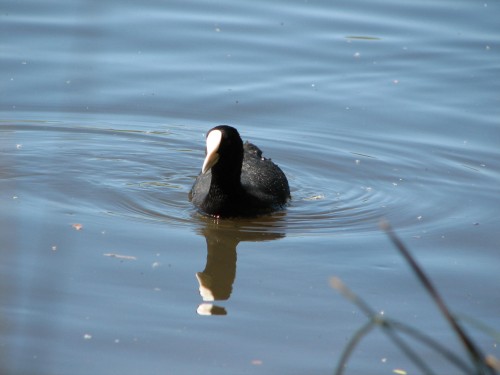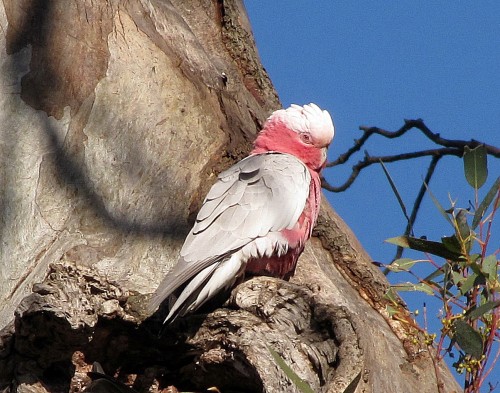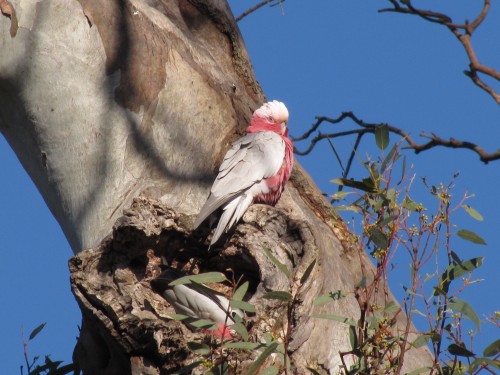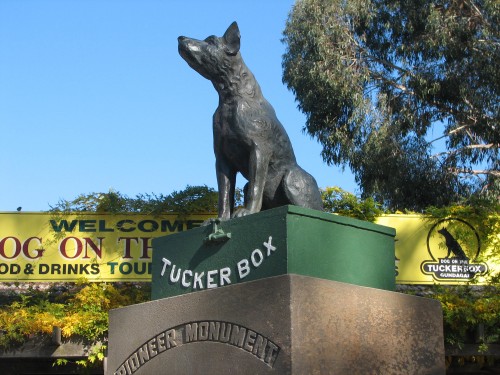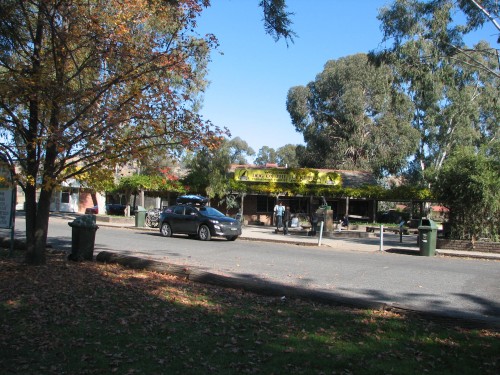Surprising waterbirds of the dry country
Dry Country
I love the dry country we have here in Australia. Most of my birding has been done in areas of Australia which have an average annual rainfall of under 250mm (10 inches). Some of this country is marginal farming country, sometimes cereals, and often sheep and cattle. I grew up on such a farm and still cherish my childhood adventures in the mallee bushland near my home.
On the road again
Earlier this week my wife and I travelled from our home in Murray Bridge, South Australia, to Sydney. We are currently staying with my son and his family. The grandchildren love having us stay with them. At ages 7 and 4 they are already showing an interest in the birds they see in their garden, and in the parks they visit. My interest has rubbed off on them.
Missing out
The car journey from home to Sydney is over 1300km, two long days of driving. In future, we think we might take three or four days to get here, stopping more frequently at the many interesting places along the way. There are many national parks, reserves, botanic gardens and bushland on this route and we just have to drive right on by, often with a groan of despair at what we might be missing.
Hay Plains
One of the places we drive through is the large rural town of Hay, located on the banks of the Murrumbidgee River. The birding along this river can be excellent. But before we get to Hay we have to pass through about 130 kilometres of the Hay Plains, a dry region consisting of few trees, much saltbush and some grassland. I find this drive to be fascinating because it often reveals odd collections of birds. On one trip we saw hundreds of Emus grazing on the low vegetation. On another trip, after heavy rain in that area, we saw thousands of ducks, mostly Australian Wood Duck and Grey Teal. They were taking advantage of the long stretches of water still lying along the edges of the highway.
Surprising Waterbirds
As we travelled along at 110kph my wife suddenly pointed out an interesting sight. It was a gathering of dozens of waterbirds: Australian Pelicans, White Ibis, Straw-necked Ibis and Yellow-billed Spoonbills. Harassing all of them from only several metres overhead was a Swamp Harrier. As we rushed by I didn’t have time to take in the presence of any other birds. I am sure that if we had had the time to stop, I would have recorded several species of ducks, perhaps coots, swamphens, egrets, herons and lapwings, cormorants, and maybe even some crakes and rails.
Irrigation
This was a very surprising collection of birds for what is essentially very dry country. The reason for their presence is explained by the presence of wide irrigation channels. The water is pumped from the nearby Murrumbidgee River into a series of channels, some of which are 5 or more metres wide. The water is then used to either flood irrigate large expanses of land, or pumped through long, overhead sprinkler systems. This area grows large amounts of hay, wheat and cotton, all irrigated from the channels. The fact that this also provides a perfect environment for numerous birds is a pleasant by-product. Further east there are large expanses of fruit orchards as well.
Further reading:
- Australian Pelicans overhead
- White Ibis at Dubbo Zoo
- Straw-necked Ibis Adelaide Zoo
- Yellow-billed Spoonbills and the birth of a birder
On the road again
We are on the road again – once again to Sydney so we can spend time with the grandchildren during the school holidays. Such a hard life.
I haven’t been able to add much here on this site in recent weeks. Between my wife and I we seem to have been on the road so many times in recent weeks in order to keep doctors’ and specialists’ appointments, most of them in Adelaide about 80km from home. Now we have a 4 week window we had blocked out on our calendar to undertake this current trip to Sydney. While most of our time will be spent with the family, I am sure that I will get a few opportunities to do some birding. I also have had a few good sightings at home in recent weeks that I must write about too.
I am writing this from our cabin in a caravan park in Hay in far western New South Wales, just over 700 kilometres from Sydney, another day’s journey to go. Just west of Hay we traversed the Hay Plain, a long, extremely flat landscape dominated by saltbush and little else. Usually the birding on this stretch of road is very interesting, and I often ask my wife to drive that section – so I can watch out for and record the birds I see going along.
Today was a little disappointing. Usually we see dozens of birds of prey: eagles, hawks, kestrels and kites. Today the count for the 135km stretch was a solitary Nankeen Kestrel. To make up for this poor showing I saw the following species:
- Australian Ravens
- White-necked Heron
- Little Egret
- Dozens of Emus
- Australian Magpie
- Magpie Lark
- Pied Butcherbird
It’s not a great long list, but it was enough to more or less keep me happy.
Some birds of the Artarmon area – and two young birders
I am currently in Sydney visiting my family, including my only two grandchildren. They are very demanding and energetic and this makes me tired, but very satisfied. When we are staying with them I don’t get many opportunities to get out birding. This trip has been a little different and I will write about that in the next few days.
One interesting thing happened this evening. For his fifth birthday in October I gave my grandson a simple, lightweight pair of binoculars. I hasten to add that this was at his request; he’d often seen me using mine and wanted to be like his granddad. We were on the front lawn looking out for any birds we could see. We managed to list the following:
- Australian Raven
- Rainbow lorikeet
- Grey Butcherbird
- Galah
- Laughing Kookaburra
We were just heading off inside for them to go to bed when Miss 2.5 yo came running up to me all excited. She pointed to the Grey Butcherbird perched on the power line about 5 metres away. I guess they are never too young to start getting them interested in birding.
Other birds seen or heard during our nearly three week stay include:
- Pied currawong
- Noisy Miner
- Common Myna
- Crested pigeon
- Australian Brush-turkey
- Sulphur-crested Cockatoo
- Tawny Frogmouth
- Australian Magpie
- Wonga pigeon
- Rock Dove
- Eastern Koel
Good birding.
On the road again part 4
Some birds around Gundagai
From Narrandera we continued travelling east, going through Wagga Wagga without stopping – except at the traffic lights. From this point on we started climbing into the hilly country and eventually the mountains. The beautiful scenery is constantly changing and is a delight to travel through.
We succeeded in reaching our morning tea destination on time, stopping to refuel both the vehicle and us. Our favourite stopping spot along this stretch of road is the Dog on the Tuckerbox complex a few miles out of Gundagai, a place made famous by the legend surrounding a dog. Another couple having a break struck up a conversation with us; they, too, came from South Australia.
Another reason for stopping in this spot was to visit our favourite road side sales outlet. Farm fresh apples sold here are delicious, and we always stop here and buy a bag or two. Sadly, we can’t do the same on the return trip home due to our home state’s stringent laws about bringing fruit in. This is to protect our extensive fruit growing areas from the dreaded fruit fly pest. As an added bonus this time, we also bought some lovely cherries.
While all this was happening I managed to get quite a respectable bird list.
- Australian Raven
- Striated Pardalote
- Galah
- Red wattlebird
- Grey Fantail
- White-plumed Honeyeater
- Australian Magpie
- Grey Shrike-thrush
- House Sparrow
- Common Starling
- Restless Flycatcher
- Australian Magpie-lark
- White-winged chough
